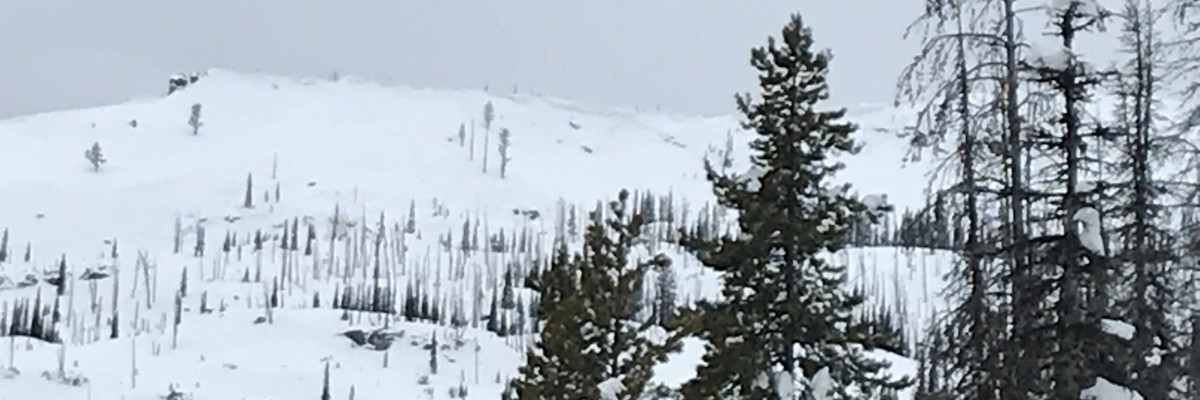The current avalanche danger is CONSIDERABLE on wind loaded slopes above 6,500 feet in the West Central Montana backcountry. A moderate avalanche danger exists on all other terrain. Careful evaluation of terrain and snowpack is necessary to identify areas of concern.
Good morning, this is Logan King with the West Central Montana Avalanche Center’s avalanche advisory for January 4th, 2018. This danger rating does not apply to operating ski areas, expires at midnight tonight and is the sole responsibility of the U.S. Forest Service.
Weather and Snowpack
Winds this morning at Deer Mountain are 9 mph gusting to 12 mph from the SSE. At point six the winds are 13 mph gusting to 15 mph from the SW. Mountain temperatures currently range from the high teens to mid twenties. An additional 1-2 inches of snow accumulated in the last 24 hours.
Travis and I rode to Twin Lakes in the central Bitterroot yesterday. We found stable snow at lower elevations with wind slab concerns continuing at higher elevations. The primary avalanche concern today is wind slabs.
The tail end of the last storm brought strong winds and developed some large wind slabs. Wind slabs are primarily located above 6,500 feet. Avoid terrain that is wind loaded. We observed a few small natural wind slab crowns yesterday and continue to receive reports of wind slabs failing with human triggers and stepping down to the Thanksgiving crust.
The secondary avalanche concern is the deep persistent weak layer on top of the Thanksgiving crust. After the last couple of storms this layer is now buried deep but is reactive when paired with wind slabs. Be very cautious of this layer, the consequences of a slide this deep would likely be catastrophic. Avoid any steep terrain where this layer is suspect including run out zones.
Loose snow avalanches are the final concern today. We observed loose surface snow sluffs yesterday that were small and non threatening. Be aware of terrain traps that increase the consequences of getting caught in a loose snow avalanche. We observed a small windslab that was triggered by a loose snow avalanche and ran through rocks breaking branches and small trees (video).
Light snow showers today and into tomorrow before the next system moves in this weekend. Snow total today will be insignificant but will provide more snow for transport. Avalanche conditions will remain the same through today.
If you are out in the backcountry, please send us your observation, these are very helpful in producing the advisory. A weather update will be issued on Friday.
Ski and ride safe.
























